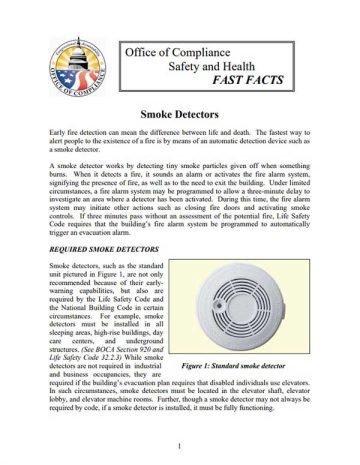Early fire detection can mean the difference between life and death. The fastest way to alert people to the existence of a fire is by means of an automatic detection device such as a smoke detector.
A smoke detector works by detecting tiny smoke particles given off when something burns. When it detects a fire, it sounds an alarm or activates the fire alarm system, signifying the presence of fire, as well as to the need to exit the building. Under limited circumstances, a fire alarm system may be programmed to allow a three-minute delay to investigate an area where a detector has been activated. During this time, the fire alarm system may initiate other actions such as closing fire doors and activating smoke controls. If three minutes pass without an assessment of the potential fire, Life Safety Code requires that the building’s fire alarm system be programmed to automatically trigger an evacuation alarm.
REQUIRED SMOKE DETECTORS
Smoke detectors, such as the standard unit pictured in Figure 1, are not only recommended because of their earlywarning capabilities, but also are required by the Life Safety Code and the National Building Code in certain circumstances. For example, smoke detectors must be installed in all sleeping areas, high-rise buildings, day care centers, and underground structures. (See BOCA Section 920 and Life Safety Code 32.2.3) While smoke detectors are not required in industrial and business occupancies, they are required if the building’s evacuation plan requires that disabled individuals use elevators. In such circumstances, smoke detectors must be located in the elevator shaft, elevator lobby, and elevator machine rooms. Further, though a smoke detector may not always be required by code, if a smoke detector is installed, it must be fully functioning.
COVERED AND BLOCKED DETECTORS
In recent Office of Compliance Safety and Health inspections, inspectors found many
covered or blocked smoke detectors that were consequently ineffective.

